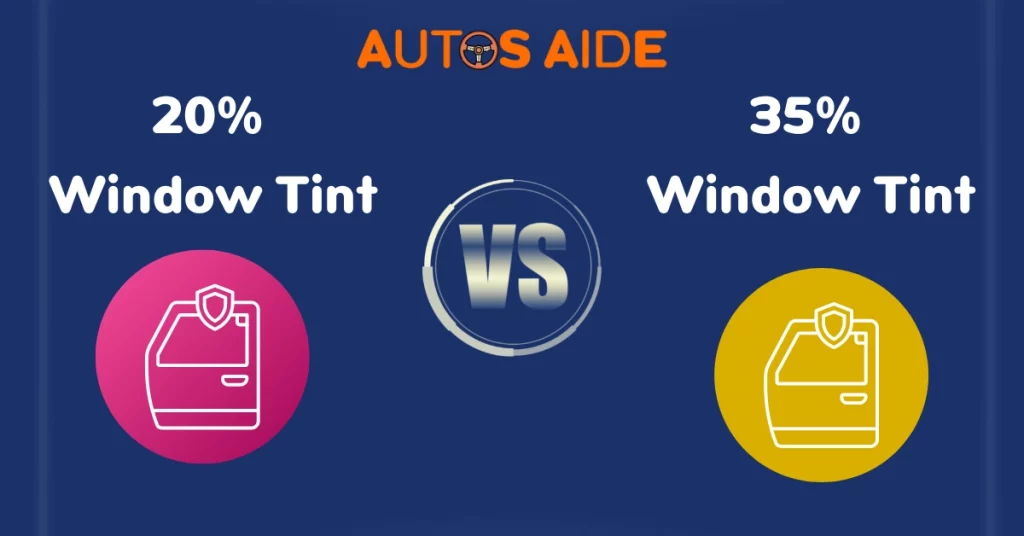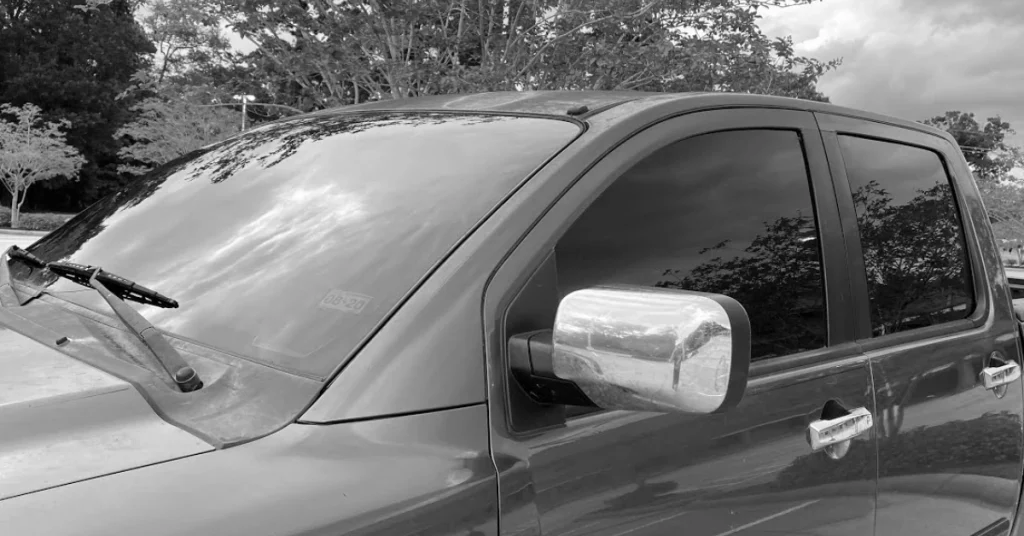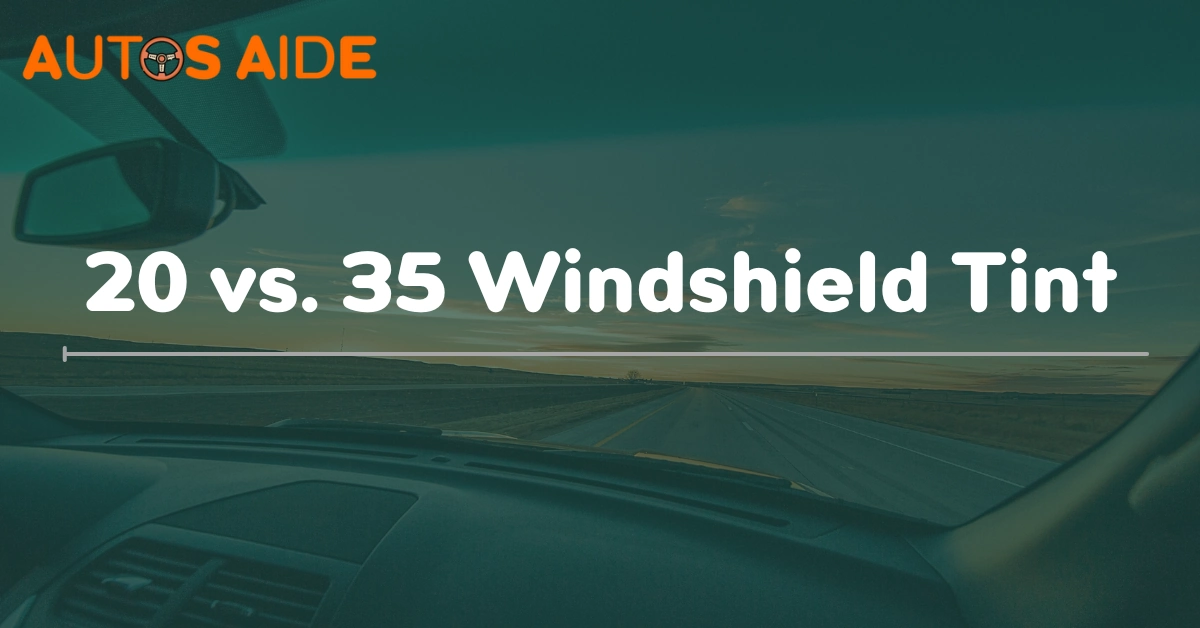Windshield tint can be a good idea if you are not a fan of strangers staring at you through the windshield while driving. Besides added privacy, windshield tints can also bounce back harmful UV rays.
Windshield tints differ in the level of darkness they provide. The lower the tint percentage, the more difficult it gets for an outsider to look through your windshield.
Today, I will discuss 20 vs. 35 windshield tint because these two are the most common tint percentages people tend to choose.
So, let’s get to it.
Read More: 50 vs. 35 Windshield Tint
Read More: 30% vs. 35% Tint
20 vs. 35 Windshield Tint

I have already mentioned that the tint percentage determines how dark your windshield appearance will be. 20% is darker, and 35% is a subtler choice. So, if you need more privacy, you go for 20%. Otherwise, settle for 35%. It’s as simple as that, right?
Not really!
First of all, there are legal complications. New Mexico is the only state that allows you to have a 20% tint on your front windshield. A few others allow 20% tint on the rear and back windshields. Unless you are a resident of those states, 20% tint will not be an option for you.
Police officers have a hard time identifying hit-and-run drivers and making eye contact with suspects in traffic stops when the front windows are darkly tinted. Heavily tinted windshields also make it easier for criminals to carry firearms.
Also, tinted windshields with lower tint percentages are too reflective. This could hamper the vision of other drivers on the road and lead to severe road accidents. So, law enforcement officers are not big fans of tinted windshields.
But legal obligations are not the only reason you should opt for a lighter shade of tint. Heavily tinted windshields reduce your road visibility. 20% windshield tint means only 20% of available sunlight will get through your windshield. We need more light to get into our eyes for better visibility. So, 20% windshield tint could be too big of a risk.
All things considered, 35% windshields appear to be a better choice to me. It gives you enough privacy and does a decent job in heat reduction and UV prevention without significantly minimizing your on-road visibility.

Read More: 50 vs. 70 Windshield Tint
What Are The Benefits Of Tinted Windshields?
Privacy
This one’s pretty obvious. Tinted windshields allow you to be more comfortable without drawing unwanted attention. So, many families choose to install tinted windshields in their family vehicles.
Security
Tinted windshields make it harder to look into your vehicle. So, you will be more comfortable leaving your valuables lying around in the car since it will be quite difficult for any prying eyes to realize what’s inside your car.
Windshield tint films also make the windshield way more challenging to break down. It will take the thieves more time to break into your vehicle since the tint film binds the shattered glass shards together. If criminals can’t tell if your car is empty or occupied, they will be less likely to break in.
Keep Out The Heat
Windshield tinting can minimize the amount of solar heat that enters the car by half. It will make your in-car atmosphere cozier during the summer. With less heat coming in, you won’t need to work the air conditioner much.
The benefits of reducing the stress on your car’s air conditioning can be twofold. I presume you already figured out that it will keep the air conditioner in better shape, which is true. The other advantage of this scenario is that it will improve your car’s fuel efficiency.
Air conditioning can account for as much as one-fifth of the overall fuel consumption in your vehicle. If you don’t need to run the a/c much often, it will result in better mileage and less engine load.
Read More: 5 vs. 20 Tint

Improved Visibility
A moderately tinted windshield can actually improve your visibility on the road. Windshield tinting is remarkably effective at reducing distracting solar glare. There are window tints that are nearly transparent but can reduce solar glare by as much as 30%.
Windshield tinting is mandatory for some drivers with special medical conditions. Cockayne syndrome, Bloom syndrome, and albinism patients show increased sensitivity to sunlight, so they must get the windshield of their cars tainted so that they can drive safely.
UV Protection
UV rays get a lot of bad press, and it’s for good reason. Increased exposure to UV rays for prolonged periods can lead to sunburns and even skin cancer. Windshield tints can block 99% of UV rays. Both 20% and 35% windshields will give you the same level of UV protection.
Besides health concerns, keeping out UV rays is important to keep your car interiors in good shape. UV rays can damage the plastic components of your dashboard over time. So, you should take appropriate measures to restrict them.
Read More: 15 vs. 5 Tint
20 vs. 35 Window Tint: Which One Is Better?
The better option if you are looking for a balance between privacy, security, heat reduction, UV protection, and visibility is 35% windshield tint. 35% windshield tint gives enough privacy and reduces heat and UV exposure while allowing enough road visibility. 20% tint may not be legal in many states and might reduce road visibility too much.
Should I get a 20% or 35% tint?
It depends on what you want and the laws in your area. Generally, 20% is the lightest legal tint, but you can get 10% or 5%, depending on your location. The darker the tint, the more privacy and protection from UV rays you will get, but it will also be harder to see.
Is 35 tint darker than 20?
Yes. 35% tint is darker than 20% tint, meaning less light will be able to pass through the tint.
Is 35% tint good enough?
It depends on what you are looking for. 35% tint is darker than 20%, giving it more privacy and protection from UV rays, but it will also be harder to see. It depends on what your desired outcome is.
Is 20% tint really dark?
Yes, a 20% tint is relatively dark for car windows. It blocks 80% of light, providing privacy and reducing heat, but it’s essential to check local tinting regulations.
Andy’s Opinion
Windshield tints can add both aesthetic and ergonomic value to your car. But how much tint is the perfect tint? Hopefully, my 20 vs. 35 windshield tint analysis gave you a better idea of these two levels of tints and made you realize which one will be better suited for you.





